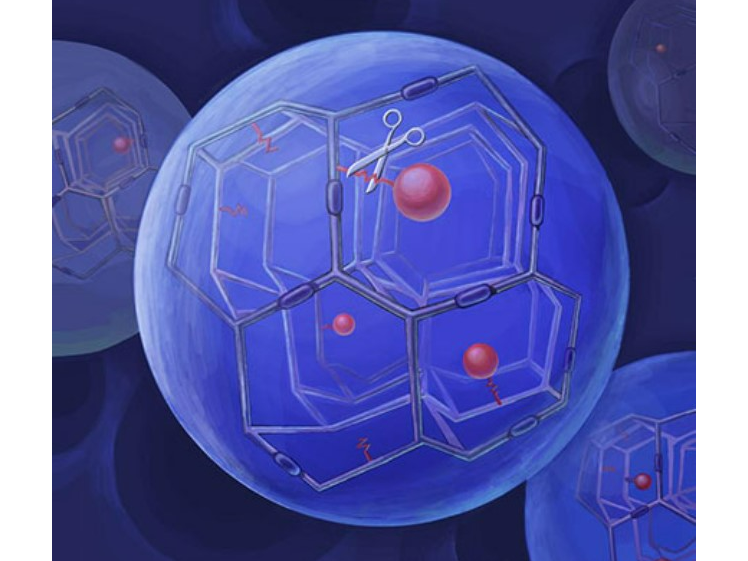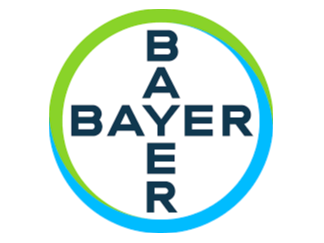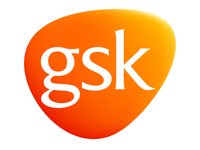Type of technology
Polymer-based particles, PEGylated hydrogel and beta-eliminative cross-linker
Administration route
Subcutaneous, Intravenous, Intratumoral
Development state and regulatory approval
Topoisomerase 1 inhibitors (TOP1i)
Phase II
Not provided
Description
ProLynx's platform leverages custom-synthesized chemical linkers to conjugate therapeutic molecules to carrier systems, thereby enabling controlled and sustained drug release. The biodegradable nature of these linkers, which degrade at predefined rates determined by their molecular architecture, facilitates predictable and prolonged therapeutic efficacy. This technology is versatile, accommodating a broad spectrum of therapeutic modalities, including small molecules, peptides, and proteins.
Developer(s)

ProLynx is a biotechnology company that specializes in developing long-acting drug delivery systems. Their technology involves attaching therapeutic agents to proprietary linkers that degrade at a controlled rate, allowing for the sustained release of drugs over extended periods. This approach is designed to reduce the frequency of dosing and improve patient compliance.
Technology highlight
1) Drug release in the Prolynx formulation is mediated by β-eliminative linkers, which undergo a rate-controlled elimination reaction. 2) Each linker within the library incorporates a unique “modulator” that independently regulates the drug release kinetics, irrespective of enzymatic influence. 3) The carrier system is composed of circulating macromolecules, such as polyethylene glycol (PEG), fabricated into 40 µm porous PEG-hydrogel microspheres. 4) To synchronize drug release with the degradation of the polymeric matrix, slower-cleaving linkers are integrated into the hydrogel crosslinks.
Illustration(s)
Technology main components
1) One or more API 2) Cross linker - it has a functional group that reacts with the reactive polymer and a moiety that cleaves by elimination under physiological conditions also comprising a functional group that reacts with one or more polymers. 3) PEGlated hydrogel microspheres 4) Gel-forming solvent (eg: water, alcohols, acetonitrile, or tetrahydrofuran)
Not provided
Delivery device(s)
No delivery device
APIs compatibility profile
Not provided
Not provided
Not provided
Not provided
Not provided
Scale-up and manufacturing prospects
A large-scale aseptic manufacturing of injectable microsphere is proposed. This unit is capable of preparing up to ∼2 L of high-quality 50 μm diameter hydrogel microspheres/day.
• Reflux Condensers • Magnetic Stirrer • Centrifuge • Filtration Equipment (vacuum filters) • Rotary Evaporator • pH Meter • Oven or Drying Chamber • Cryogenic Freezer
Manufacturing process requires ISO Class 5 or 7 environment. The manufacturing process includes: • Reflux Apparatus - Crosslinking of Polymers and Incorporation of Drugs • Filtration and Centrifugation Equipment • Spectroscopic Instruments
• Size Exclusion Chromatography (SEC) • Dynamic Light Scattering (DLS) • Mechanical Testing
Excipients
No proprietary excipient used
No novel excipient or existing excipient used
No residual solvent used
Additional features
- Biodegradable
- Drug-eluting
- Monolithic
- Non-removable
1) Drug release is governed by a rate-controlled β-elimination mechanism. The drug release rate is directly proportional to the degree of ionization at physiological pH 2) The API is covalently linked to the hydrogel matrix via a cleavable linker. 3) Hydrolysis of this linker liberates the API, increasing plasma drug concentration and the half-life of the drug. Various acidity of the functional group added to the API controls the rate of release from the hydrogel. 4) The controlled release profile is attributed to the slower degradation rate of the hydrogel matrix.
A 25 to 30-gauge needle is used for subcutaneous injections. Insert the needle at an angle of 45° or 90° depending on the length of the needle and/or depth of the subcutaneous layer.
Phase II studies of PLX038 show that it is safe and effective in previously treated advanced breast cancer. It is a conjugated active metabolite of Irinotecan.
The structure and integrity of hydrogel remain stable in physiological conditions of pH and temperature.
Not provided
Therapeutic area(s)
- Other(s) : "Ocular disorders and achondroplasia"
- Pain management
- Oncology
- Treatment
Potential associated API(s)
- Exenatide
- Poly (ADP-ribose) polymerase (PARP) inhibitors (PARPi)
- Topoisomerase 1 inhibitors (TOP1i)
- Interleukin 15 (IL-15)
- C-type natriuretic peptides (CNP)
Use of technology
- Administered by a community health worker
- Administered by a nurse
- Administered by a specialty health worker
Monthly, Once every 2 weeks
Not provided
Targeted user groups
- Adults
- All
Unspecified
Unspecified
No
Not provided
Exenatide
Antidiabetic
Pre-clinical
Not provided
Diabetes
Not provided
Once a week
Not provided
Poly (ADP-ribose) polymerase (PARP) inhibitors (PARPi)
PEG-PARP inhibitor
Pre-clinical
Not provided
Oncology
Not provided
Not provided
Not provided
Topoisomerase 1 inhibitors (TOP1i)
Antineoplastic agent - Topoisomerase 1 inhibitor
Phase II
NCT06162351
Advanced Breast Cancer
Women more than 18 years old who are previously treated with chemotherapy
Every three weeks
Not provided
Interleukin 15 (IL-15)
Immunotherapy
Pre-clinical
Not provided
Not provided
Not provided
Not provided but the PK study shows that the t1/2 (half life) is approximately 5 days
Not provided
C-type natriuretic peptides (CNP)
Modified type C natriuretic peptide (CNP) analog
Pre-clinical
Not provided
Achondroplasia
Not provided
Every 2 weeks and once monthly
Not provided
Hydrogels with biodegradable crosslinking
Hydrogels that degrade under appropriate conditions of pH and temperature by virtue of crosslinking compounds that cleave through an elimination reaction are described. The hydrogels may be used for delivery of various agents, such as pharmaceuticals.
US11454861B2
Formulation
Prolynx LLC
Not provided
August 30, 2039
Active
Slow-release conjugates of SN-38
Conjugates of SN-38 that provide optimal drug release rates and minimize the formation of the corresponding glucuronate are described. The conjugates release SN-38 from a polyethylene glycol through a β-elimination mechanism.
US10342792B2
Not provided
Prolynx LLC
Not provided
June 14, 2038
Active
Prodrugs and drug-macromolecule conjugates having controlled drug release rates
The present invention provides methods and compositions that permit controlled and prolonged drug release in vivo. The compounds are either prodrugs with tunable rates of release, or conjugates of the drug with macromolecules which exhibit tunable controlled rates of release.
US9387254B2
Not provided
Prolynx LLC
Not provided
March 21, 2034
Active
Conjugates of somatostatin analogues
Conjugates of carriers and hydrogels for controlling the biological half-life of somatostatin and its analogs are disclosed.
US10413594B2
Not provided
Prolynx LLC
Not provided
June 22, 2024
Active
Publications
Henise, J. et al. A Platform Technology for Ultra-Long Acting Intratumoral Therapy. Sci Reports 14:14000. doi:org/10.1038/s41598-024-64261-8. (2024)
Intratumoral (IT) therapy is a powerful method of controlling tumor growth, but a major unsolved problem is the rapidity that injected drugs exit tumors, limiting on-target exposure and efcacy. We have developed a generic long acting IT delivery system in which a drug is covalently tethered to hydrogel microspheres (MS) by a cleavable linker; upon injection the conjugate forms a depot that slowly releases the drug and “bathes” the tumor for long periods. We established technology to measure tissue pharmacokinetics and studied MSs attached to SN-38, a topoisomerase 1 inhibitor. When MS~SN-38 was injected locally, tissues showed high levels of SN-38 with a long half-life of ~ 1 week. IT MS~SN-38 was ~ tenfold more efcacious as an anti-tumor agent than systemic SN-38. We also propose and provide an example that long-acting IT therapy might enable safe use of two drugs with overlapping toxicities. Here, long-acting IT MS~SN-38 is delivered with concurrent systemic PARP inhibitor. The tumor is exposed to both drugs whereas other tissues are exposed only to the systemic drug; synergistic anti-tumor activity supported the validity of this approach. We propose use of this approach to increase efcacy and reduce toxicities of combinations of immune checkpoint inhibitors such as αCTLA-4 and αPD-1
Carreras, C. et al. Long-Acting Poly(ADP-ribose) Polymerase Inhibitor Prodrug for Humans. Bioconjugate Chem 35(4), 551-558. (2024) https://pubs.acs.org/doi/10.1021/acs.bioconjchem.4c00112
Poly(ADP-ribose) polymerase inhibitors (PARPi) have been approved for once or twice daily oral use in the treatment of cancers with BRCA defects. However, for some patients, oral administration of PARPi may be impractical or intolerable, and a long-acting injectable formulation is desirable. We recently developed a long-acting PEGylated PARPi prodrug, PEG∼talazoparib (TLZ), which suppressed the growth of PARPi-sensitive tumors in mice for very long periods. However, the release rate of TLZ from the conjugate was too fast to be optimal in humans. We prepared several new PEG∼TLZ prodrugs having longer half-lives of drug release and accurately measured their pharmacokinetics in the rat. Using the rates of release of TLZ from these prodrugs and the known pharmacokinetics of free TLZ in humans, we simulated the pharmacokinetics of the macromolecular prodrugs and released TLZ in humans. From several possibilities, we chose two conjugates that could be administered intravenously every 2 weeks and maintain TLZ within its known therapeutic window. We describe situations where the PEG∼TLZ conjugates would find utility in humans and suggest how the intravenously administered long-acting prodrugs could in fact be more effective than daily oral administration of free TLZ
Fontaine, S. D., Carreras, C. W., Reid, R. R., Ashley, G. W., & Santi, D. V. (2023). A Very Long-acting Exatecan and Its Synergism with DNA Damage Response Inhibitors. Cancer research communications, 3(5), 908–916. https://doi.org/10.1158/2767-9764.CRC-22-0517
Exatecan (Exa) is a very potent inhibitor of topoisomerase I and anticancer agent. It has been intensively studied as a single agent, a large macromolecular conjugate and as the payload component of antigen-dependent antibody–drug conjugates. The current work describes an antigen-independent conjugate of Exa with polyethylene glycol (PEG) that slowly releases free Exa. Exa was conjugated to a 4-arm 40 kDa PEG through a β-eliminative cleavable linker. Pharmacokinetic studies in mice showed that the conjugate has an apparent circulating half-life of 12 hours, which reflects a composite of both the rate of renal elimination (half-life ∼18 hours) and release of Exa (half-life ∼40 hours). Remarkably, a single low dose of 10 μmol/kg PEG-Exa—only approximately 0.2 μmol/mouse—caused complete suppression of tumor growth of BRCA1-deficient MX-1 xenografts lasting over 40 days. A single low dose of 2.5 μmol/kg PEG-Exa administered with low but efficacious doses of the PARP inhibitor talazoparib showed strong synergy and caused significant tumor regression. Furthermore, the same low, single dose of PEG-Exa administered with the ATR inhibitor VX970 at doses of the DNA damage response inhibitor that do not affect tumor growth show high tumor regression, strong synergy, and synthetic lethality.
Schneider, E. L., Carreras, C. W., Reid, R., Ashley, G. W., & Santi, D. V. (2022). A long-acting C-natriuretic peptide for achondroplasia. Proceedings of the National Academy of Sciences of the United States of America, 119(30), e2201067119. https://doi.org/10.1073/pnas.2201067119
The C-natriuretic peptide (CNP) analog vosoritide has recently been approved for treatment of achondroplasia in children. However, the regimen requires daily subcutaneous injections in pediatric patients over multiple years. The present work sought to develop a long-acting CNP that would provide efficacy equal to or greater than that of vosoritide but require less frequent injections. We used a technology for half-life extension, whereby a drug is attached to tetra-polyethylene glycol hydrogels (tetra-PEG) by β-eliminative linkers that cleave at predetermined rates. These hydrogels-fabricated as uniform ∼60-μm microspheres-are injected subcutaneously, where they serve as a stationary depot to slowly release the drug into the systemic circulation. We prepared a highly active, stable CNP analog-[Gln6,14]CNP-38-composed of the 38 C-terminal amino acids of human CNP-53 containing Asn to Gln substitutions to preclude degradative deamidation. Two microsphere [Gln6,14]CNP-38 conjugates were prepared, with release rates designed to allow once-weekly and once-monthly administration. After subcutaneous injection of the conjugates in mice, [Gln6,14]CNP-38 was slowly released into the systemic circulation and showed biphasic elimination pharmacokinetics with terminal half-lives of ∼200 and ∼600 h. Both preparations increased growth of mice comparable to or exceeding that produced by daily vosoritide. Simulations of the pharmacokinetics in humans indicated that plasma [Gln6,14]CNP-38 levels should be maintained within a therapeutic window over weekly, biweekly, and likely, monthly dosing intervals. Compared with vosoritide, which requires ∼30 injections per month, microsphere [Gln6,14]CNP-38 conjugates-especially the biweekly and monthly dosing-could provide an alternative that would be well accepted by physicians, patients, and patient caregivers.
Schneider, E. L., Henise, J., Reid, R., Ashley, G. W., & Santi, D. V. (2016). Hydrogel Drug Delivery System Using Self-Cleaving Covalent Linkers for Once-a-Week Administration of Exenatide. Bioconjugate chemistry, 27(5), 1210–1215. https://doi.org/10.1021/acs.bioconjchem.5b00690
We have developed a unique long-acting drug-delivery system for the GLP-1 agonist exenatide. The peptide was covalently attached to Tetra-PEG hydrogel microspheres by a cleavable β-eliminative linker; upon s.c. injection, the exenatide is slowly released at a rate dictated by the linker. A second β-eliminative linker with a slower cleavage rate was incorporated in polymer cross-links to trigger gel degradation after drug release. The uniform 40 μm microspheres were fabricated using a flow-focusing microfluidic device and in situ polymerization within droplets. The exenatide-laden microspheres were injected subcutaneously into the rat, and serum exenatide measured over a one-month period. Pharmacokinetic analysis showed a t1/2,β of released exenatide of about 7 days which represents over a 300-fold half-life extension in the rat and exceeds the half-life of any currently approved long-acting GLP-1 agonist. Hydrogel-exenatide conjugates gave an excellent Level A in vitro-in vivo correlation of release rates of the peptide from the gel, and indicated that exenatide release was 3-fold faster in vivo than in vitro. Pharmacokinetic simulations indicate that the hydrogel-exenatide microspheres should support weekly or biweekly subcutaneous dosing in humans. The rare ability to modify in vivo pharmacokinetics by the chemical nature of the linker indicates that an even longer acting exenatide is feasible.
Additional documents
No documents were uploaded
Useful links
There are no additional links
Collaborate for development
Consider on a case by case basis, collaborating on developing long acting products with potential significant public health impact, especially for low- and middle-income countries (LMICs), utilising the referred to long-acting technology
Share technical information for match-making assessment
Provide necessary technical information to a potential partner, under confidentiality agreement, to enable preliminary assessment of whether specific medicines of public health importance in LMICs might be compatible with the referred to long-acting technology to achieve a public health benefit
Work with MPP to expand access in LMICs
In the event that a product using the referred to long-acting technology is successfully developed, the technology IP holder(s) will work with the Medicines Patent Pool towards putting in place the most appropriate strategy for timely and affordable access in low and middle-income countries, including through licensing
All sponsors
No sponsor indicated



